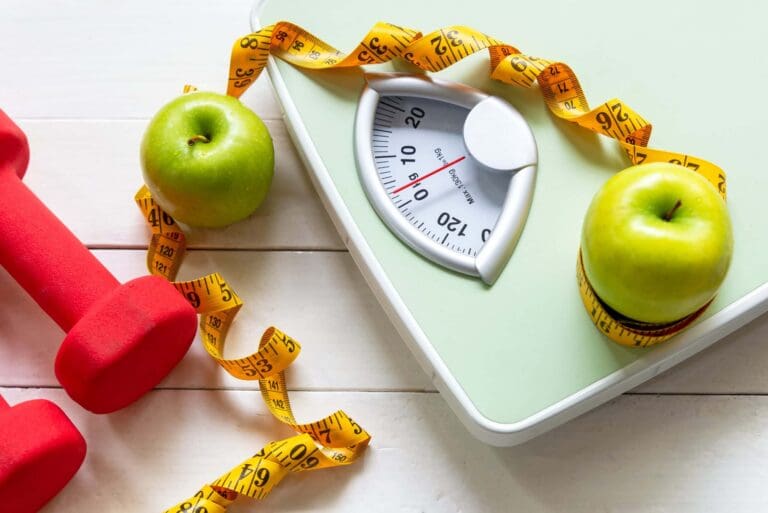We independently review everything we recommend. When you buy through our links, we may earn a commission. Learn more›
![Is Teflon Safe? The Truth About Nonstick Cookware [2025] 1 is teflon safe](https://static.wixstatic.com/media/ecad10_43352fa4eb3c49c6a7c5ae5eca701002~mv2.jpg/v1/fit/w_847,h_565,al_c,q_80/file.png)
While Teflon-coated cookware is generally considered safe when used as directed, there are important safety concerns to consider. Modern Teflon products no longer contain PFOA (phased out in 2013), but they still contain PTFE which can release toxic fumes when heated above 570°F. This comprehensive guide examines the scientific evidence behind Teflon safety and provides practical alternatives for healthier cooking.
Non-stick pans single-handedly revolutionized the cooking process for many households. Made widely available around the 1960s, non-stick coatings allowed food to slip right off of cookware and saved home cooks countless hours of scrubbing and scouring.
That convenience, however, came at a cost.
Most non-stick pans are coated with a chemical called Teflon. Teflon contains a compound known as C8, which is harmful to both your health and the environment. According to a large body of research, C8 disrupts normal hormone function and lowers testosterone levels in men. It has also been linked to various cancers and birth defects.
In this post, I’ll discuss the dangers of Teflon, and recommend safer alternatives to make your kitchen a toxin-free zone.
Expert Insight: Environmental Toxins & Fitness Performance
As a certified health professional with 17+ years of experience, I understand how environmental toxins directly impact your fitness journey. Research shows toxin exposure can increase recovery time by up to 15-20% and contribute to persistent inflammation that makes workout progress more difficult. Many clients come to me frustrated by plateaus that have nothing to do with their workout consistency, but rather with environmental factors undermining their efforts.
Just as we focus on proper nutrition, exercise technique and sleep hygiene, reducing your daily toxin exposure can play a role in optimizing your fitness results. In my work with thousands of clients, I’ve found that addressing these environmental factors can be an overlooked element that helps improve results when traditional fitness approaches aren’t producing the expected progress.
As Featured In: CNN, Dr. Oz, Shape Magazine, The New York Times
What Exactly is Teflon?
![Is Teflon Safe? The Truth About Nonstick Cookware [2025] 2 teflon pan](https://static.wixstatic.com/media/ecad10_01b5bd2748b347ba9b93500ad43ade11~mv2.jpg/v1/fit/w_847,h_565,al_c,q_80/file.png)
Teflon is a brand-name non-stick coating made of polytetrafluoroethylene, or PTFE, for short. First manufactured in the 1930s, Teflon created a non-stick, non-reactive surface for household cookware.
While its primary use is in cookware, Teflon is a very stable coating (meaning it does not react with other chemicals), which also makes it popular as a waterproof coating for materials like fabrics and wires.
While Teflon was once widespread, it’s come under fire in recent years because, in addition to PTFE, it contains a chemical called perfluorooctanoic acid (Known as PFOA or C8, for short). PFOA was used in Teflon products until 2013.
While PFOA supposedly burns off during the manufacturing stage, research has found trace amounts of PFOA lingering on cookware long after manufacturing.
This means that, when you cook with Teflon-coated pots and pans, that PFOA is making its way into your food and your body.
Why Should I Worry About PFOA & PTFEs in my Cookware?
Both PFOA and PTFE are linked to a variety of dangerous health conditions, including the following:
-
- Thyroid disorders
-
- Chronic kidney disease
-
- Liver disease
-
- Infertility
-
- Testicular cancer
-
- Low birth weight
-
- Birth defects
-
- And more
PFOA is a concerning chemical because it stays in the environment and the human body for long periods. The chemical was once so widespread in the United States that a 1999 study found that upwards of 98% of all people had PFOA in their bloodstream.
The scariest part?
The chemical wasn’t only present in the bloodstreams of people who cooked with Teflon cookware – it came from a variety of other environmental exposure, as well.
When consumers started to find out, there was an uproar directed at Teflon. That led the EPA to introduce a program called the PFOA Stewardship Program.
The program put pressure on eight leading PFOA companies, including DuPont (the then-maker of Teflon) to eliminate the use of PFOA by 2015. PFOA was ultimately phased out two years ahead of schedule – in 2013.
Transform Your Health: Get Your Free Clean Living Fitness Guide
Discover how to reduce toxin exposure by 70% while optimizing your workout recovery. Join 5,000+ readers who’ve already downloaded this science-backed guide to maximize fitness results through clean living.
Is Teflon Safe to Cook With?
As it stands now, using non-stick cookware as directed is considered “safe.” Since 2013, the companies that make Teflon cookware have been forced to alter the manufacturing process to eliminate PFOA, which means new cookware won’t contain the toxic compound.
Additionally, PTFE (the other common component of Teflon) is inert, meaning it won’t react with chemicals inside or outside the body. Because of these factors, proponents of non-stick cookware say it’s safe to use “as directed.”
Looking for expert guidance? Work with a NY Times featured trainer from anywhere in the world. Explore Online Training →
As you might imagine, though, there’s a catch:
The problem arises when pans containing Teflon are super-heated. At temperatures above 570 degrees Fahrenheit, Teflon coating begins to break down, releasing toxic chemicals into the air and environment.
Once these chemicals are released, they can never be re-captured. In some cases, they’ve led to a condition known as “polymer fume fever,” or “Teflon flu.” The condition causes temporary, flu-like symptoms including headache, body aches, fever, and chills, and generally occurs within 4-10 hours of exposure.
Because of this risk, I strongly recommend not cooking with Teflon. While many companies claim that it’s perfectly safe to use, even The American Cancer Society hints that there may be an association between Teflon and cancer.
They’ve released statements confirming that PFOA is linked to an increased risk of tumors in rats, and kidney, prostate, bladder, ovarian, and thyroid cancer in people. Given the evidence, the EPA has said of PFOA that there is “suggestive evidence of carcinogenicity, but not sufficient to assess human carcinogenic potential.”
If you want to make your kitchen a less toxic place, it’s important to remember that Teflon cookware isn’t the only brand that contains dangerous chemicals.
Other cookware may also contain PFOAs. The only way to avoid these compounds is to be careful about what you buy – only purchase brands that specify on their labels that their items are PFOA- and PTFE-free.
If you can’t find a label guarantee, contact the manufacturer directly or consult the company’s website to find out if their cookware contains PFOA or PTFE.
Why is Teflon Still on the Market?
Teflon is still around thanks mostly to the PFOA Stewardship Program. Because PFOA is no longer a component of Teflon, Teflon proponents say the compound is no longer harmful, and that cooking it is perfectly safe for your health.
This argument, however, has quite a few weak points.
Just because Teflon no longer contains PFOA does not mean it is suddenly safe and non-toxic. Teflon still contains PTFEs, and Teflon pots and pans manufactured before 2013 likely contain both PTFE and PFOA.
Ready to Transform Your Health?
Get Personalized Training — From Anywhere
Custom workout plans, nutrition guidance, and accountability from a certified trainer with 17+ years of experience.
What is a Safer Alternative to Teflon?
![Is Teflon Safe? The Truth About Nonstick Cookware [2025] 4 cast iron pan](https://static.wixstatic.com/media/ecad10_ad1f8c5aa02a4606bef6884515ad249f~mv2.jpg/v1/fit/w_1000,h_667,al_c,q_80/file.png)
While Teflon introduces a variety of toxic materials to your kitchen, there are plenty of safe, high-quality, non-toxic alternatives.
Safe Cooking Alternatives
Here are a few of my favorites:
Cast Iron
Pros: Cast iron has been a go-to cooking material for hundreds of years for good reason: it’s durable, long-lasting, non-toxic, and has a superior thermal density – meaning it stays hotter longer.
Plus, it’s excellent for searing foods and can go straight from the cooktop to the oven to the tabletop.
Cons: While some people are afraid to cook in cast iron since it can cause food to stick, a well-seasoned cast iron pan is versatile and easy to cook with. Cast iron pans are also heavier than other alternatives and are not ideal for cooking acidic foods unless the pan is very well seasoned.
Pros: If you’re looking for non-toxic cookware, stainless steel is another excellent choice. In addition to being durable and scratch-proof, stainless steel cookware heats evenly, cleans well, is reasonably priced, has a nice weight in the hand, and isn’t reactive with acidic foods like tomatoes and citrus.
Cons: Stainless steel isn’t necessarily non-stick. Still, oiling the pan well and using metal cooking utensils can help promote a streamlined cooking experience. Stainless steel is also prone to discoloration under high heat or when exposed to saltwater.
Ceramic
Pros: Ceramic cookware is beautiful to look at and offers a non-stick coating that’s safer than Teflon. Ceramic cookware rose to popularity when people initially started looking for PFOA- and PTFE-free non-stick pans. Today, ceramic pots and pans come in a wide variety of colors, finishes, and sizes. They’re easy to clean and are generally oven- and stovetop-friendly.
Cons: Unlike cast iron or stainless steel, ceramic cookware will scratch, so using metal tools is not recommended. Some ceramic cookware items may also distribute heat less efficiently than other materials. Finally, ceramic cookware tends to be less durable than cast iron or stainless steel and can chip over time.
Should I Throw Out My Teflon Pans?
If you have Teflon pans in your kitchen, what should you do with them?
While using clean, non-toxic cookware is essential to living a healthier life, it can feel wasteful to throw out something you spent good money on.
While I advocate recycling Teflon pans and replacing them with one of the alternatives listed above, there are ways to reduce your exposure to chemicals if you do decide to keep them.
Here are my top suggestions:
-
- Only use new pans. Since pans made before 2013 contain the most dangerous chemicals, make sure you’re only using newer pots and pans that have smooth, unscratched cooking surfaces.
-
- Keep the heat low. PTFE-coated pans release toxic gases and particles when they’re heated to high temperatures. To keep your pans from overheating, avoid using them under a broiler, and be careful never to preheat empty pans.
-
- Use no-scratch cooking utensils. When you use scratched Teflon pans, they release tiny bits of Teflon coating, which ultimately wind up in your food. With this in mind, only use non-scratch, silicon, or wooden cooking utensils – never metal utensils.
-
- Ventilate your kitchen. To protect yourself from dangerous fumes, always turn on the fan when you’re cooking with a non-stick pan.
★ Key Takeaways
Modern Teflon cookware (post-2013) is PFOA-free but requires careful handling
Never heat Teflon pans above 570°F to avoid toxic fumes
Consider safer alternatives like cast iron or stainless steel
If using Teflon, avoid high heat and metal utensils
Environmental toxins can delay muscle recovery and compromise workout results by up to 20%
A Healthier Lifestyle Starts Here
They say the kitchen is the heart of the home, and banishing toxic compounds like Teflon from yours is an important step to living a healthier, cleaner life. While navigating information about cookware safety and chemical exposure can feel overwhelming, making small, informed changes can have a lasting impact on your family’s wellbeing.
Your Transformation Starts Here
Ready to Work With Holly?
Get personalized training tailored to your goals — available online from anywhere in the world, or in-person in the SF Bay Area and NYC.
Also available: In-Studio Training • At-Home Training

![Is Teflon Safe? The Truth About Nonstick Cookware [2025] 5 Holly Roser](https://www.hollyroser.com/wp-content/uploads/2025/01/Holly-Roser-Head-Shot.jpeg)





